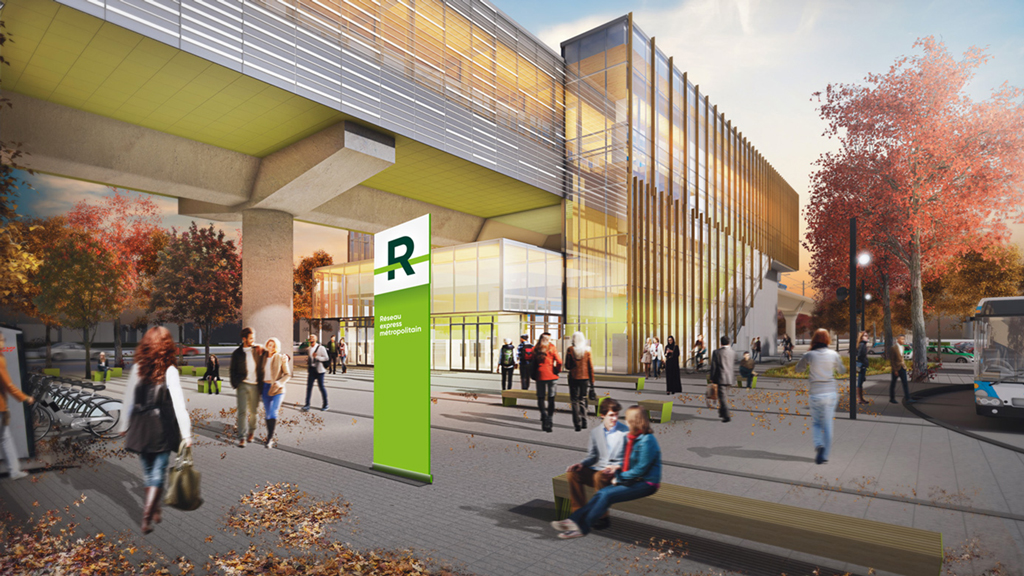Ontario’s massive commitment to new transit over the next decade represents a major opportunity for community-building but panellists gathered for an Urban Land Institute (ULI) Toronto discussion on the subject argued that planning and collaboration must be improved to ensure there are lasting benefits for everyone.
A new paper prepared by ULI Toronto and the Future of Infrastructure Group identified a dozen barriers that if not addressed will prevent Ontario’s upcoming portfolio of transit-oriented communities (TOC) from reaching their potential.
What’s at stake, explained Rowan Mills, vice-president with Colliers and convenor of the panel, is a generation’s worth of transit spending — the government has pledged to spend $61.6 billion on transit across the province in the next 10 years — and how well that spending will stimulate strong communities.
“The focus of this report is, we’d really like to see this sort of investment in transit infrastructure lead to really complete communities being built and how that can catalyze that growth,” said Mills. “There’s just massive growth and opportunity for revitalization.”
The panellists were Yvonne Yeung, manager of urban design for the City of Brampton; Ken Greenberg, principal with Greenberg Consultants; Matti Siemiatycki, University of Toronto geography and planning professor; and Randy Peddigrew, an executive vice-president with the Remington Group.

The report, titled Getting to Transit Oriented Communities, focused on lessons learned from four major eastern Canadian transit projects and the spinoff developments arising on adjacent properties: the Science Centre Station that is part of the Eglinton Crosstown LRT in Toronto; the Markham Centre development served by the GO Stouffville Line; the Brampton Uptown Hurontario-Steeles corridor being spurred by Hurontario light rail; and Montreal’s REM project with multiple development opportunities.
A key “learning” from the report is the importance of finding shared visions and values amidst so many entities, including municipal and provincial governments, regulators, transit agencies, developers and the local community.
Montreal’s REM was identified as a strong example of progressive engagement. Greenberg noted he is part of a consultation committee of 12 experts assembled by the developer CDPQ Infra.
“It certainly is not easy, but the conversations that happen around that table to me illustrate the enormous advantage of creating those kind of models of interaction among the key parties who have to deliver on these visions,” said Greenberg.
The panellists noted the terminology has shifted from transit-oriented developments to TOCs. The partners in Ontario are no longer seen to be Metrolinx and a team of profit-taking developers but rather the transit builder and a broad team of community builders including health care providers, educational institutions and other members of civil society.
Yeung noted as part of its community-development plan, the City of Brampton was focusing on expanding pedestrian spaces.
Peddigrew, whose firm is the major developer of the new Markham city centre, seized on that example to cite a problem that arises when there is no mechanism to develop shared visions.
“I think that’s great, the six-metre sidewalk, but I can tell you right now, if I tried to do something like that, my first comment back would be, ‘Operations doesn’t have a sidewalk plow wide enough.’ And I wouldn’t be able to get it done,” said Peddigrew.
Greenberg referred to the restraint as working in silos.
“What’s common here to all of these examples is getting people out of silos,” he said. “We keep coming back to that expression, unlock the shared vision. I think what we’ve learned in the course of looking at these four examples is that this means a profoundly different way of working, a different way of thinking that challenges a lot of the practices and assumptions.”
Barriers identified in the study include organizational fragmentation; rigid, established processes; lack of dedicated resources; different mindsets; difficulties in determining fair value; integration of stations; and technical challenges.
An example of such a challenge is in Markham, where the GO line and other corridors are intrusive and form a barrier.
With each of the case studies, there are numerous success stories offering hope that challenges can be overcome. Brampton, for example, pioneered a plan where developers could see how the area around the station was developing to build a more co-ordinated experience.
Siemiatycki noted the Ontario government has created a supportive regulatory environment for the creation of TOCs, passing the Building Transit Faster Act, the Transit-Oriented Communities Act and the Ontario Rebuilding and Recovery Act all within one year.
“We need to get on with this,” he said. “And the way that you do that is in the collaborations and creating the spaces where people build trust, they build relationships.”











Recent Comments